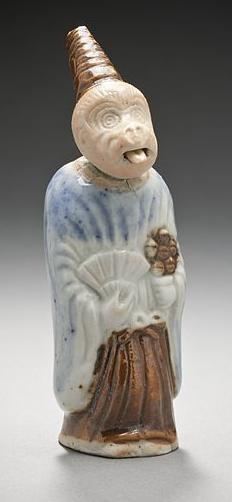 | ||
'The Ape and the Fox is one of Aesop's Fables and is numbered 81 in the Perry Index.
The story and its spread
The animals meet to choose a king and are so impressed by the capering of an ape that they crown him. The fox had been one of the contestants and now plays the part of courtier. Taking the ape aside, he says that he has found something to whet the royal appetite and leads him to a baited trap. Caught in the trap, the ape accuses the fox of treachery. The latter replies that someone so gullible and greedy is unfit to rule. The moral of the story is that those who aspire to govern must first learn to govern themselves.
The fable is very old and may predate Aesop since it seems to have been used by the 7th century BCE poet Archilochos. In Europe it was for a long time restricted to Greek sources but it was one of those that also travelled eastwards into Central Asia from about the 8th century CE. Papyrus fragments of the fable from this era have been discovered in both Sogdian and Uyghur. Aesop's fables were known in Japan as early as 1594, appearing in one of the first books printed with Roman type and continuing in popularity ever since.
The fable of the ape and the fox began to appear in other European countries during the 17th century. Hieronymus Osius devoted a Neo-Latin poem to it and it is included in the collections of both Roger L'Estrange and Samuel Croxall. The latter comments on the ape's behaviour that 'to be weak is often to be wicked'.
Under the title "The Monkey King", the fable was one of four set for narrator, horn and piano by Anthony Plog (2011).
